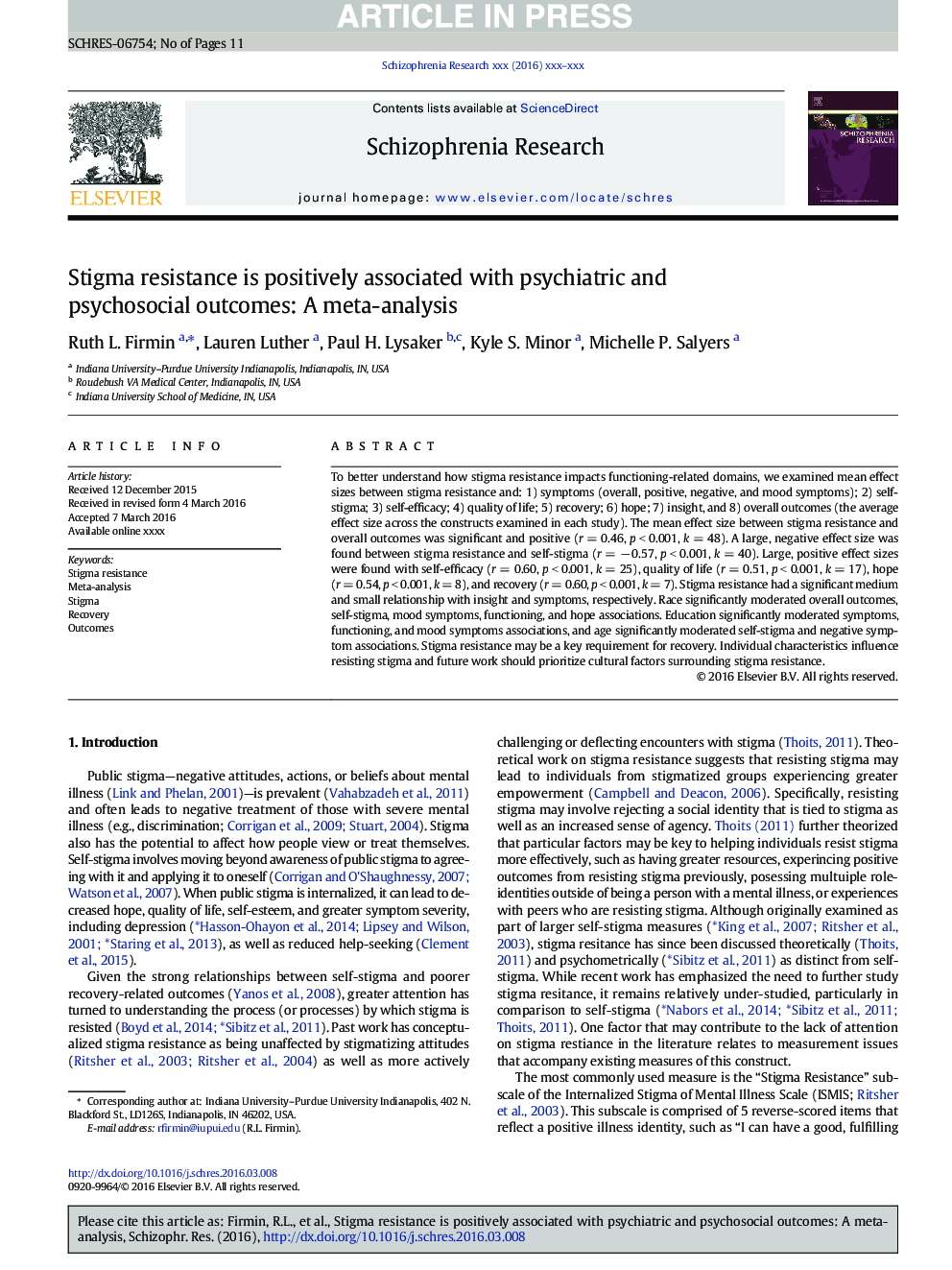| Article ID | Journal | Published Year | Pages | File Type |
|---|---|---|---|---|
| 6822650 | Schizophrenia Research | 2016 | 11 Pages |
Abstract
To better understand how stigma resistance impacts functioning-related domains, we examined mean effect sizes between stigma resistance and: 1) symptoms (overall, positive, negative, and mood symptoms); 2) self-stigma; 3) self-efficacy; 4) quality of life; 5) recovery; 6) hope; 7) insight, and 8) overall outcomes (the average effect size across the constructs examined in each study). The mean effect size between stigma resistance and overall outcomes was significant and positive (r = 0.46, p < 0.001, k = 48). A large, negative effect size was found between stigma resistance and self-stigma (r = â 0.57, p < 0.001, k = 40). Large, positive effect sizes were found with self-efficacy (r = 0.60, p < 0.001, k = 25), quality of life (r = 0.51, p < 0.001, k = 17), hope (r = 0.54, p < 0.001, k = 8), and recovery (r = 0.60, p < 0.001, k = 7). Stigma resistance had a significant medium and small relationship with insight and symptoms, respectively. Race significantly moderated overall outcomes, self-stigma, mood symptoms, functioning, and hope associations. Education significantly moderated symptoms, functioning, and mood symptoms associations, and age significantly moderated self-stigma and negative symptom associations. Stigma resistance may be a key requirement for recovery. Individual characteristics influence resisting stigma and future work should prioritize cultural factors surrounding stigma resistance.
Related Topics
Life Sciences
Neuroscience
Behavioral Neuroscience
Authors
Ruth L. Firmin, Lauren Luther, Paul H. Lysaker, Kyle S. Minor, Michelle P. Salyers,
